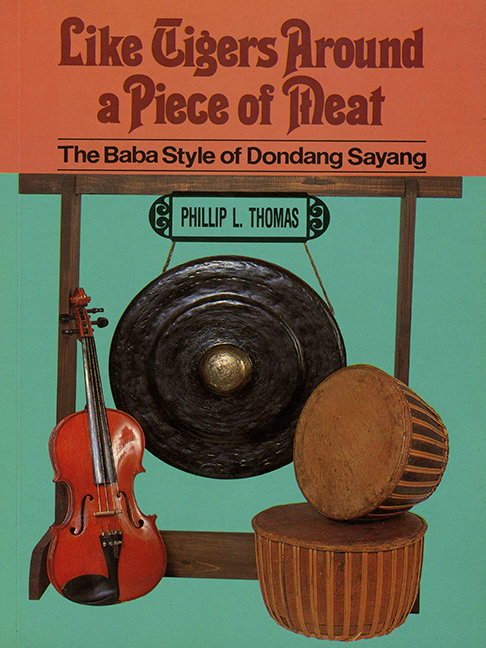LIKE TIGERS AROUND A PIECE OF MEAT
Published online by Cambridge University Press: 21 October 2015
Summary
Burung cecawi di pohon sena,
Pohonnya besar dahannya jarang;
Biola, penyanyi, gong, rebana,
Barulah jadi si Dondang Sayang.
(William Tan 1982)A drongo sits in the senna tree,
The tree is large, its branches scarce;
A violin, singer, gong, and tabor,
Now you have Dondang Sayang.
Shortly before he passed away in 1982, the master singer Boon Kim Yew recalled the Dondang Sayang of twenty years earlier. He said, “In those days we used to be like tigers around a piece of meat, but today I think of quitting. There are no young people coming to Gunong Sayang to learn how to sing. There is no longer any challenge. Always the same people come forward.” To what extent this pessimism is justified is difficult to say, but what is clear is that for many Malaysians, and increasingly more Singaporeans, the ability to understand Dondang Sayang has been lost. In this study, I outline the known history of the form and give an account of the Baba and, to a lesser extent, Malay aesthetic systems which generate and interpret this style of sung, poetic debate found in Malacca, Singapore, Penang, and Kuching.
Because my emphasis here is on the Baba style of Dondang Sayang, the account of Malay practice is necessarily limited. Malay aesthetics requires a separate study; yet an understanding of Baba work is impossible without at least an elementary appreciation of its Malay roots. Babas view Malay Dondang Sayang as the model they aspire to, attributing to it a greater difficulty, a more refined use of language, different values of poetic creation, and above all, a more fluent poetic technique. In the following remarks, I have tried to suggest that Malay aesthetics has quite different values. These will be set out later in an appropriate work.
- Type
- Chapter
- Information
- Like Tigers Around a Piece of MeatThe Baba Style of Dondang Sayang, pp. 1 - 2Publisher: ISEAS–Yusof Ishak InstitutePrint publication year: 1986



